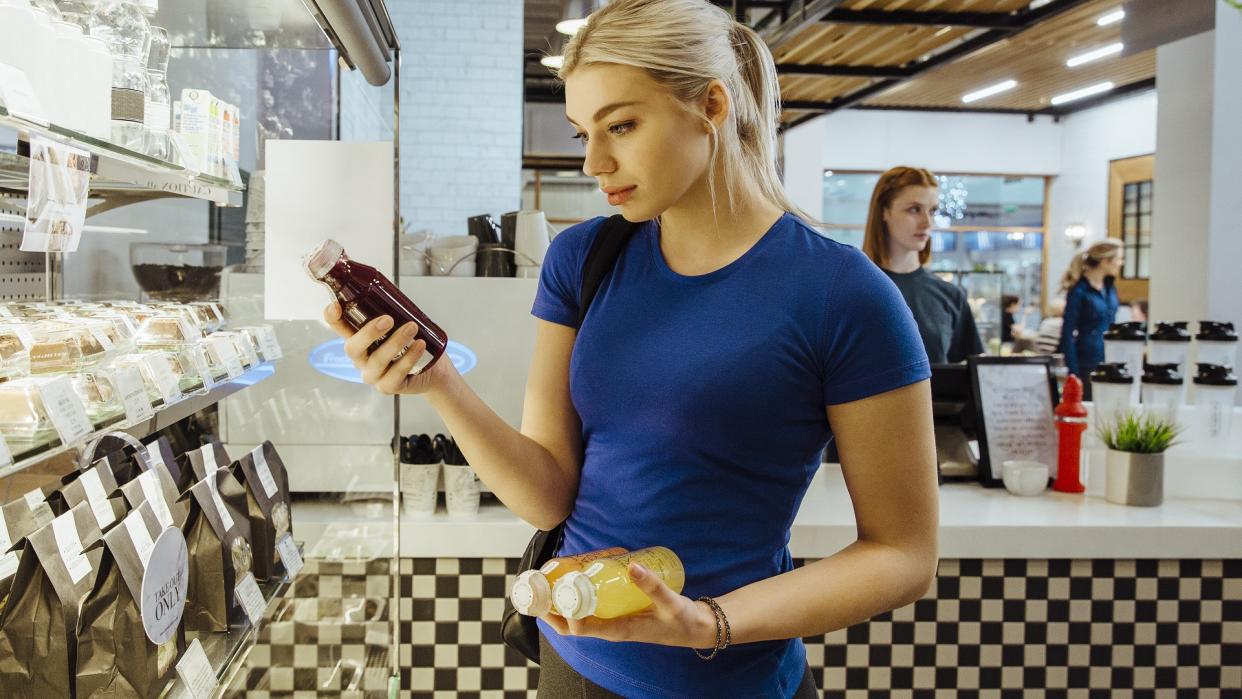Food Prices Skyrocket, but Consumers Fight Back: The Battle Between Profits and Wallets

Living with unstable market conditions and a potential recession in the offing, it stands to reason that American families are becoming increasingly fed up with food prices that are still hovering near record highs.
I’m a Financial Planning Expert: Here Are 5 Things You Should Never Spend Money on If You Want To Be Rich
Find: How To Build Your Savings From Scratch
However, many food companies are profiting from persistent price hikes without a mass push-back by consumers. “You just have not yet seen this real cliff where demand has just completely dropped off,” noted Bank of America analyst Bryan Spillane via USA Today. “There really hasn’t been as material a negative impact on (sales) volume as people thought.”
As The New York Times reported, dips in sales volume at the large food and beverage corporations are being offset by increased prices and profits. Last quarter, major companies like Unilever and Nestle raised their prices on certain items to combat volume drops of 1.3% and 2.6% the previous quarter. Beverage giants Coca-Cola and PepsiCo raised their prices by 12% and 16% in the latest quarter and subsequently saw their profits jump 12% and 18% respectively, far outpacing volume slides.
With demand still high and inflation waning (somewhat), shoppers are still spending. “What we are seeing is the willingness to pay up for things you need,” said Simeon Siegel, a retail analyst at BMO Capital Markets.
However, regardless of the pricing control they wield, companies can’t simply continue to jack up prices on the consumer and hope they come along for the ride. As Sucharita Kodali, a retail analyst at Forrester, suggested, “Customers may or may not come back. At some point, they will say enough is enough.”
Take Our Poll: What Are You Worth to Your Company?
Industry trend-watchers are starting to see some resistance from shoppers as they change their spending behaviors, similar to what happened when COVID-19 was hitting America, as cutting discretionary spending on large purchases like TVs and household appliances became the norm.
Now, people are trimming on smaller-scale items, buying less non-essential groceries, buying bulk and off-brand products and concentrating on the staples. Some are even buying and eating less in general. Consumers are looking to spend only on the goods they really need.
Whether it will be enough to affect corporations’ bottom lines industry-wide is doubtful. Food isn’t discretionary and families can’t just ignore buying groceries when prices get too high. If people need to buy food, companies might slow or stop prices increases, but they won’t be in any hurry to drop them. People have to be able to afford food, and unfortunately, no one has an accurate guess as to when anything will drop in price.
Despite slight decreases across various consumer price indexes from February to March, the overall food index is up 8.5% year-over-year from March 2022. The index for food at home rose 8.4% over the 12 months ending in March. The cost of eggs has soared 36%, cereals and bakery products 13.6% and dairy and related products 10.7%.
Explore: 5 Brand-New Items at Dollar Tree That Cost Way More at Target
Costco’s Best Deals? Employee Reveals 10 Standout Buys for Your Money
Hopefully, the pace of food price increases will slow as inflation levels out and supply issues improve. The U.S. can’t control many of the global forces driving food prices, and because it doesn’t have reserves in food like it does in oil, there’s no way to merely manipulate supply. As usual, the pressure is on the consumer to bear the brunt and get by as best they can until corporations put need before greed.
More From GOBankingRates
This article originally appeared on GOBankingRates.com: Food Prices Skyrocket, but Consumers Fight Back: The Battle Between Profits and Wallets
